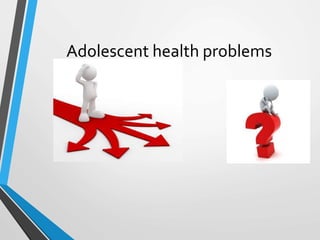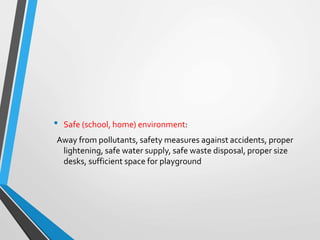This document discusses adolescent health issues in Egypt. It begins by defining adolescence and describing the physical, mental, and psychological changes that occur. It then outlines the objectives of identifying major health problems, assessing adolescent needs, and explaining preventive health programs. Some key points made include:
- The major health problems faced by adolescents include infections, reproductive issues, accidents, behavioral problems, and psychological issues. Mortality is mainly from accidents, infections, and complications of severe diseases.
- Risk factors include risky behaviors, substance use, unhealthy eating and sleeping, lack of exercise, and risky sexual behaviors.
- Adolescents have needs for autonomy, trust, education tailored to their stage of development, family support, nutrition,




































